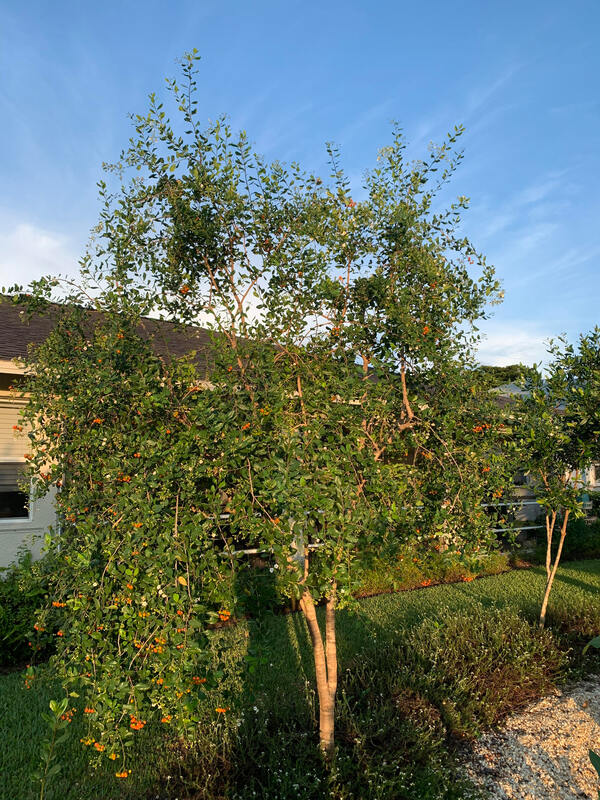Strongback
Bourreria succulenta
Bourreria succulenta
|
Bourreria succulenta grows as a shrub to small tree up to ten meters in height. The trunk is typically 2-10 cm in width but in very old specimens as much as 20 centimeters wide. The leaves are alternate, simple, obovate, smooth, to about 10 cm, the apices are rounded or may be notched, lighter green beneath. The tree may lose many leaves in the winter dry season (tardily deciduous) but they come back in a robust fashion with the spring and summer rains.
The complete, perfect, actinomorphic flowers are arranged in cymes. The calyx has 5 fused sepals forming a tube. The corolla has 5 white fused petals that are salverform. The 5 stamens are fused to the corolla and are alternate with the petals. The fruit is a berry that turns orange-red at maturity. The fruits are edible to humans. The flowers attract butterflies and other insects and the fruits are an important source of food for birds. Bourreria succulenta is used in the horticultural trade and the wood to make carvings. "Our Bourreria succulenta is always abuzz with hummingbirds, all sorts of butterflies, sphinx moths, bees, wasps, and bee-flies, and then when it fruits, here come the resident and migratory birds to join the feast. I’ve watched blue-headed vireos pluck entire flowers and swallow them. Its real common name is strongback, which relates to a tea made from the leaves in the Bahamas “to give men a strong back.” I guess when Bahamians pronounce the word back, it sounds like bach, so the name got corrupted as strongbark over here. A very heavyset Bahamian woman in Marsh Harbor on Abaco told me that strongback tea is actually a sexual aid for men, not for lifting things, or pushing a mower! She owned a restaurant called Shut Up and Eat!” ROGER HAMMER |

